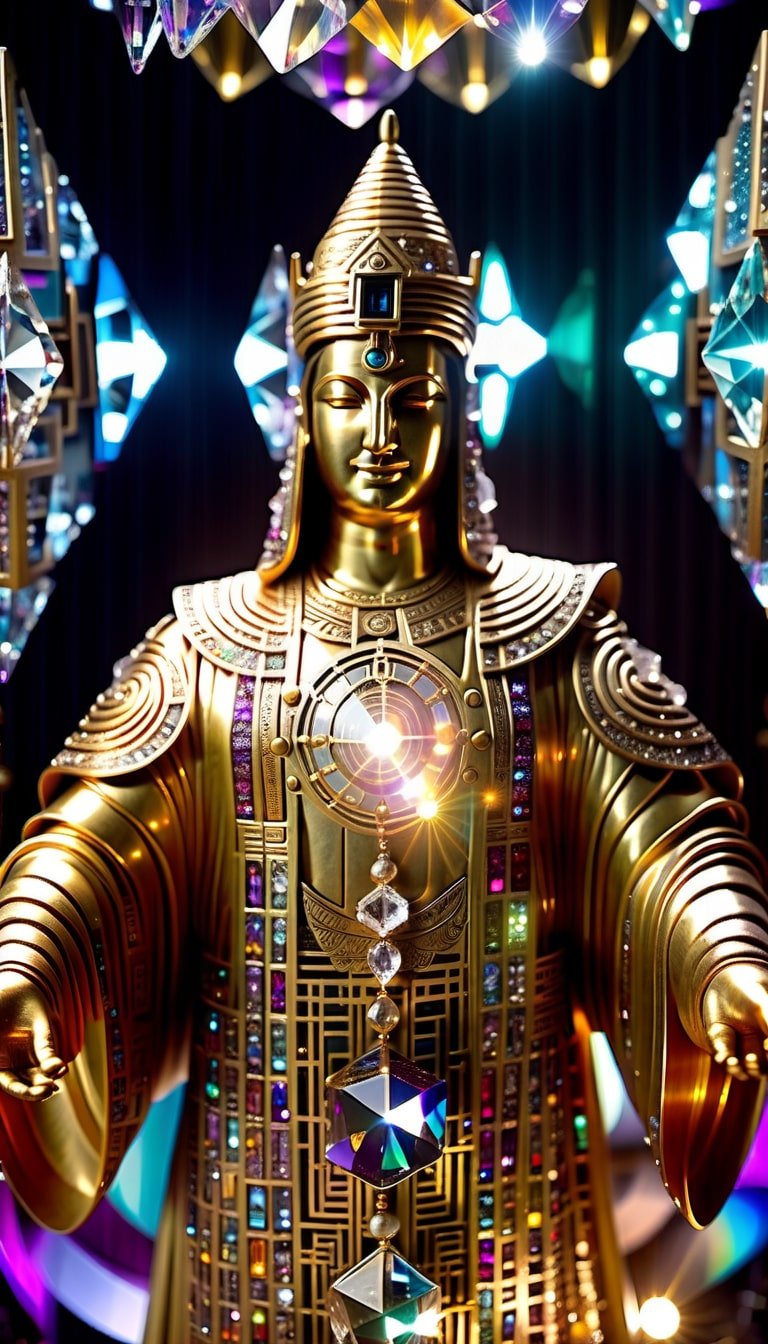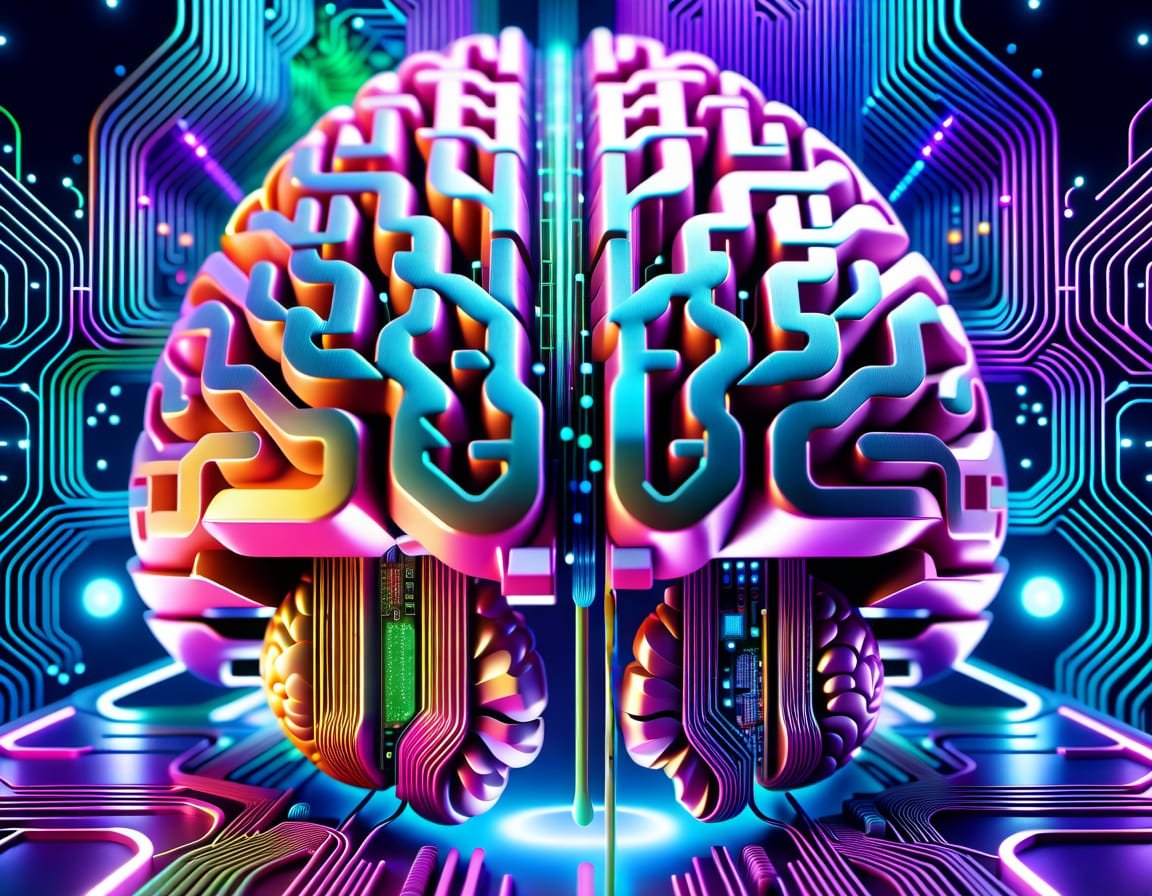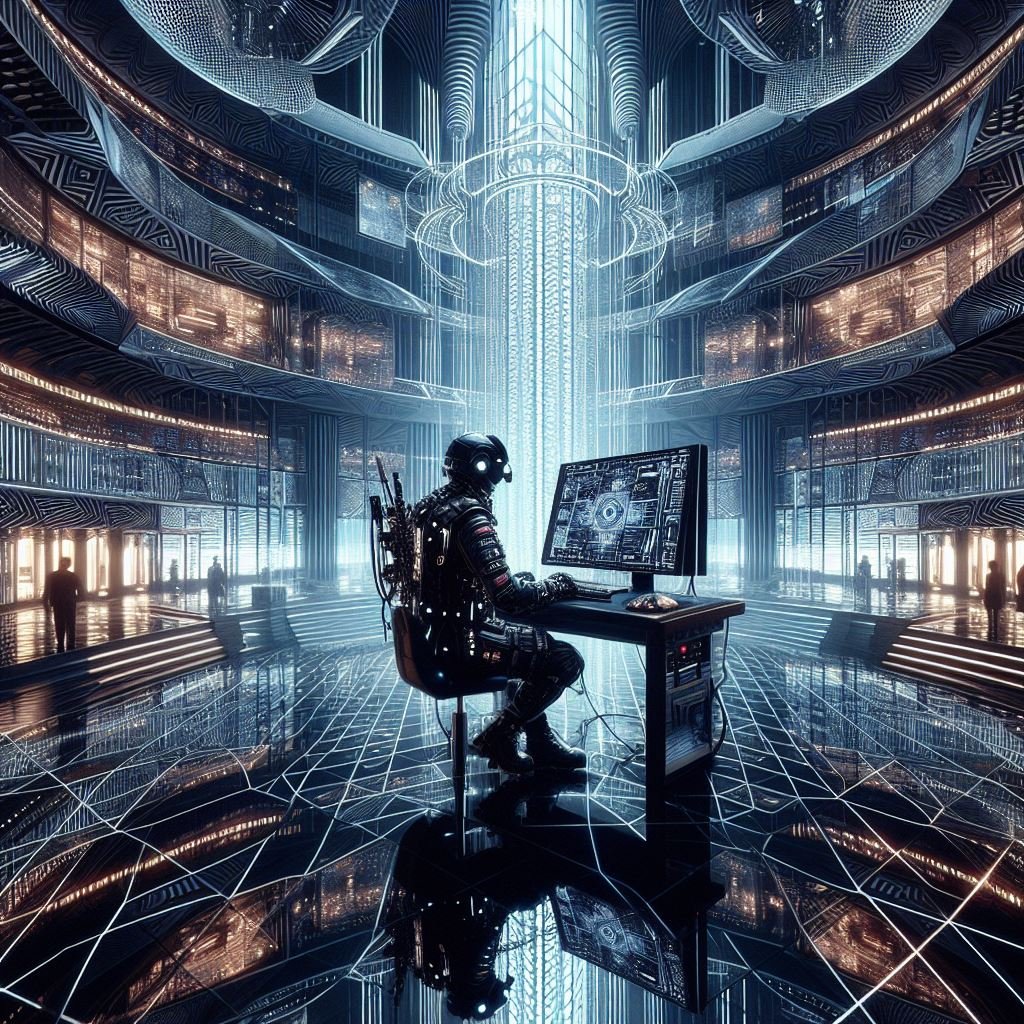Nvidia EOS Supercomputer: Driving a New Era of Generative AI
How Nvidia EOS, one of the world's fastest supercomputers, will unlock unprecedented capabilities in language, image, video, and quantum AI
Nvidia EOS Supercomputer: Driving a New Era of Generative AI
In the expanding pantheon of artificial intelligence, 2023 may be remembered as the year generative AI captured the world's imagination. The likes of DALL-E 2, GPT-3, and the more recent ChatGPT have demonstrated astonishing natural language abilities, conjuring vivid images and cogent prose from the barest of prompts.
Yet as remarkable as these models are, they merely hint at the creative potential of AI. To fully realize innovations like autonomous reasoning, multi-modal learning, and common sense at scale, extraordinarily powerful compute is required. [1]
Enter Nvidia's latest feat of engineering—the EOS supercomputer—aptly named for the Greek Goddess who opens the gates of dawn each morning. As one of the top 10 fastest supercomputers globally, EOS promises to usher in new breakthroughs in generative AI, facilitating complex alignments between vision, language, robotics, and even quantum applications. [2]
Quantum Master of the Infinite Mysteries, Surreal Hyperdimensional 3D Sculpture created with Stable Diffusion
The Power Behind the AI Throne: Understanding Nvidia EOS
Purpose-built by Nvidia for developing and training AI models, EOS represents the leading edge of accelerated computing. The system achieves an astounding 18.4 AI exaflops of performance, making it over 60X faster than Nvidia's previous DGX SuperPOD installation introduced just last year. [3]
To appreciate the sheer scale of EOS, consider that one AI exaflop equates to over one quintillion operations per second, or a billion billion calculations every second. This puts EOS's muscle behind only the US Department of Energy's Frontier exascale supercomputer in terms of speed. [4]
Key EOS Supercomputer Specifications [5]:
576 DGX H100 systems with 4,608 Nvidia H100 GPUs
Nvidia Quantum-2 networking delivering 400 Gb/s interconnectivity
18.4 AI exaflop performance matched with optimized AI software stack
Not only is EOS blisteringly fast, but every aspect of the system is tailored for AI workloads. The same Nvidia H100 Tensor Core GPUs accelerating EOS also power cloud-based AI offerings from partners like Azure, AWS, and Oracle. These chips contain accelerator engines explicitly designed to speed up the intense mathematical operations behind deep learning algorithms.
Meanwhile, Nvidia Quantum-2 networking enables rapid shuttling of huge datasets between nodes to train models faster. Rounding out hardware capabilities, each DGX H100 unit integrates tightly with Nvidia software, firmware, and APIs optimized to extract the most performance.
Awakening of the Galactic Crystal Core, Visions of a Surreal and Majestic Landscape of Tranquil Crystalline Emanations, Surreal Portrait of the Goddess Eos
ALTERNATIVE SUPERCOMPUTERS: HOW EOS STACKS AGAINST TOP-TIER COMPETITION
While clearly blazing new trails for AI acceleration, Nvidia’s EOS joins several bleeding-edge supercomputers optimizing workloads differently. Critical analysis highlights EOS’s competitive differentiation even among elite options like the Frontier exascale system. [6]
However, Oak Ridge National Laboratory’s Frontier supercomputer edged out EOS for the #1 spot on the latest TOP500 ranking based on its 1.1 exaflop HPC speed. [7] That said, Frontier relies partly on traditional CPUs unoptimized for AI tasks. By comparison, EOS’s full stack from chips up focuses singly on AI workload efficiency.
Evaluating alternatives like Frontier showcases EOS’s purposeful design. For instance, Frontier’s 1.1 peak exaflops fall far short of EOS’s 18 exaflops for AI/ML applicatons specifically. And while competing options promise multi-workload versatility, EOS’s streamlined topology delivers unmatched AI training performance— cementing Nvidia’s dominance in the accelerating arena.
TECHNICAL DIFFERENTIATION: HARDWARE AND SOFTWARE STACK OPTIMIZED JUST FOR AI
Peeling back EOS’s architectural layers reveals extreme optimization throughout its AI-centric design. Both hardware and software components target efficiency gains for the ballooning calculations integral to neural network training. This manifests in everything from job scheduling to chip interconnects to model parallelism support.
For example, EOS sports uniquely low latency solutions like Nvidia Quantum 2 Infiniband networking capable of 400Gb per second transfers between GPUs. Meanwhile NVLink provides dense high-bandwidth connectivity directly between GPU dies. [8] Together these facilitate breakneck data flow for complex model pipeline parallelism.
On the software side, digging into the CUDA and CUDA-X portfolio reveals deep integration of frameworks like PyTorch and TensorFlow with APIs and libraries tailored for EOS hardware. There are also AI-focused enhancements related to caching, memory management, multi-instance scaling, and security reducing overhead. [9]
REAL-WORLD USE CASES: HOW CUSTOMERS LEVERAGE EOS’S SCALE
While OpenAI garners headlines for its artful creations, numerous others race to tap EOS’s potential across industries. In healthcare, Humana and UK Biobank rely on Clara Discovery 10.0’s AI muscle for preventative genomics. In financial services, Fidelity Investments extracts signals from alternative data using LSTM networks.
Public sector researchers like NASA to MIT partner with Nvidia on projects from fusing sensor feeds in space to predicting extreme weather boosted by EOS resources. Retailers, manufacturers, and software vendors benefit similarly via improved demand forecasting, predictive maintenance, and natural language query understanding at scale. [10]
Collectively these use cases validate EOS’s broad applicability. Yet all share common dependency on ingesting troves of multi-modal data to train next-generation operative AI. Thus Nvidia aptly centralizes elite scale providers can amplify unlike any in-house deployment.
THE FUEL FOR ADVANCED MODELS: HOW EOS POWERS MASSIVE DATA PIPELINING NEEDS
Feeding state-of-the-art AI is no trifling feat. Unlike humans relying on relatively compact experience, contemporary models depend on digesting vast datasets before acting broadly. Think thousands of well-labeled examples for each novel scenario encountered to yield coherent responses.
Fortunately EOS’s on-demand architecture supports ingesting such big data stores seamlessly. Its ultra-fast storage subsystem effectively parallelizes loading hundreds of terabytes of images, documents, voice samples, video frames etc. on demand—accelerating iterative improvement. [11]
Likewise EOS accommodates continuous data wrangling essential to preparing raw inputs for training. This manipulation at scale may involve cleaning invalid records, normalization, augmentation with variations, careful annotation, and conversion to optimal tensor formats quantitative models require. Such pipeline conditioning is easy to underestimate, but vital to maximizing model accuracy.
Nvidia EOS; Fueling a New Generative AI Revolution, Japanese woman stands wearing an elaborate futuristic gown with crystal inserts, surreal portrait, hasselbad 501C
Demystifying the Business of AI Chip Domination
While AI model breakthroughs understandably capture public attention, none would be possible without the supporting compute foundation. Here Nvidia maintains an undisputed lead, evident in its meteoric market value expansion to over $400 billion. [6]
Once primarily known as a gaming hardware company, Nvidia recognized years ago the potential of its graphics processors for accelerating parallel workloads like artificial intelligence. Since then, Nvidia has invested billions in R&D to evolve its GPU microarchitecture and expand capabilities purpose-built for AI. [7]
The results speak for themselves. Nvidia now commands over 80% market share for AI chips, serving elite customers like OpenAI, Meta, Microsoft, and Google which rely on its data center GPUs to fuel exponential growth. [8] With the launch of flagship products like the H100 and EOS supercomputer, Nvidia continues to lap the competition when it comes to enabling the future scale of AI.
Skyrocketing Demand Propels Nvidia’s Ascent
Nvidia’s astronomical market value expansion is underpinned by surging demand across its business segments, especially data center. In the coming earnings report, Nvidia’s data center revenue, encompassing its AI accelerators, is projected to vault nearly fourfold, or almost 300%, year-over-year to over $17 billion. [11]
Net income for the entire company likely eclipsed $10.5 billion last quarter, more than 700% higher than the $1.4 billion posted a year prior. Further validating its AI chip dominance, Nvidia’s gross profit margin recently widened to 74%, indicating each GPU sold is squeezing out even more value. [12]
Predictably, Nvidia’s gaming chip business also continues expanding briskly, benefitting partly from cryptomining demand as well. However going forward, analysts forecast Nvidia’s data center boom to widen still, projecting over 200% revenue growth annually for years to come. [13] This unrelenting appetite from hyperscalers explains Wall Street’s optimism, expecting CEO Jensen Huang to showcase unparalleled expansion.
Nvidia is Driving a Creative Renaissance: EOS Prepped to Transform the Media Landscape, Surreal Portrait of a Cyberpunk Visionary Plugged into the Quantum Internet, Vaporwave
WALL STREET’S BULLISHNESS: NVDA’s ASCENT FUELED BY INSATIABLE AI DEMAND
In tandem with EOS’s launch, Nvidia’s latest quarterly figures make clear AI will become its chief cash cow. Reporting 69% data center growth, TAM estimates now suggest Nvidia’s total addressable data center market alone could eclipse $100 billion by 2024. [12] With large language models doubling in size every two months, Nvidia GPUs look to satisfy skyrocketing parameters.
Spurring Wall Street’s optimism further, next-generation offerings like the Hopper H100 promise over 6X efficiency gains that hyperscalers eagerly await. [13] Translated—Nvidia continues stretching its AI accelerator advantage as customer growth sustains triple-digit pace. And with megaclouds like AWS, Azure, and Oracle partnering closely around offerings tailored to their stacks, adopting Nvidia’s silicon also helps ease enterprise migrations to public cloud AI.
Imminent Emanations of the EOS Protocol, Cyborg Woman Downloads Quantum Miracles, Surreal 3D Digital Portrait
Mythology and Metaphor: The Symbolism Behind ‘EOS’
Nvidia’s choice of the name EOS for its groundbreaking AI supercomputer holds deep symbolic meaning. In Greek mythology, Eos is the Goddess who opens the gates of heaven each dawn to allow the Sun’s light to nourish the earth. The metaphor connects profoundly with enabling breakthroughs in generative AI.
Just as Eos makes way for the illuminating rays of sunlight, Nvidia’s EOS supercomputer will propagate the seeds of creative AI to drive unprecedented progress. Fittingly, organizations leveraging EOS will also be among the first to reap the abundance of AI’s multiplying returns across industries.
Consider OpenAI, creators of Dall-E 2 and the ChatGPT phenomenon, which proudly relies on Nvidia hardware and is an early adopter of the greatly expanded EOS compute pool. With access to 18 AI exaflops of power, OpenAI software engineers now enjoy a fertile training ground to take natural language understanding to new heights.
The dawn goddess parallel also nods to beginning a new era where AI broadly transforms human enterprise. Just as the titans Hyperion and Themis parented the radiant Eos in mythology, Nvidia’s elite team of engineers have conceived their luminous namesake. And akin to Eos preceding the shining ascent of Helios the sun god, EOS paves the way for AI enlightenment.
The Roman Goddess Aurora Illuminates New Dawn
Delving deeper into classical mythology, Nvidia’s dawn goddess has a Roman counterpart in Aurora, goddess of the dawn. As sister to Sol the sun god and Luna the moon, Aurora likewise signifies the daily coming of light. Ancient myths tell of Aurora arising each morning, opening the gates of heaven with rosy fingers for Apollo’s sun chariot passage. [14]
The parallel concept of ushering in enlightenment connects Eos and Aurora across Greek and Roman lore. Accordingly, just as Aurora enabled the lifegiving light of Sol to bathe the land, nourishing growth and abundance below, Nvidia’s AI namesake shall propagate the renewing rays of artificial intelligence across industries.
And as Apollo relies on Aurora’s punctuality to commence his sun crossing, those organizations leveraging EOS’s firepower depend on its readiness to achieve AI ascendancy. Here too Aurora’s mythological kinship and personification of dawn is meaningful regarding the new era Nvidia’s goddess shall shepherd technology into at scale. Indeed the shared dawn goddess metaphor across cultures resonates with enlightenment and renewal of purpose, signaling EOS as a new beginning for AI.
EOS Supercomputer: The Power to Create the Generative Ai Solutions of Tomorrow, Surreal 3D Sculpture of a Quantum Core Built Based on the Architecture of the Human Brain
DEMOCRATIZING AI ADVANCEMENT THROUGH SHARED RESEARCH RESOURCES
Historically pioneering artificial intelligence required assembling elite hardware and talent at concentrated hubs. But by pooling access to what was unattainable scale individually, Nvidia effectively democratizes AI research across organizations. Diverse teams can now refine innovations once exclusive to computational royalty.
For example most universities lack dedicated data centers for experimentation with large models. Without sufficient distributed training resources or costly cloud time, early research rarely matures. However through Nvidia’s rental consortium around EOS as shared infrastructure, academics gain new means to investigate tantalizing frontiers like few-shot learning at scale.
Similarly smaller organizations can leverage EOS access to validate proofs of concept benefiting industries poorly served by AI currently. By subsidizing initial R&D testing via grants and programs welcoming wide collaboration, breakthroughs can blossom across domains to uplift healthcare, government services, agriculture, sustainability initiatives and more.
Cyberpunk Technician Builds the Quantum World of Tomorrow
IMPLICATIONS OF AI SCALING ON SOCIETY AND GOVERNANCE
As EOS empowers generative AI to disseminate at scale, thorny sociotechnical dynamics manifest acutely. When AI authored creations spread virally through social networks, human gatekeepers struggle judging provenance appropriately. Likewise creators wrestle upholding accountability for actions by models initially trained on finite data.
These pressing dilemmas argue for mindful governance amidst abundantly powerful generative AI. Industry leaders convening around best practices—like Microsoft’s recent call for national dialogue on AI principles offers promise. [15] Additionally non-profits such as the Partnership on AI seek to unify policy voices across civil society on issues from algorithmic bias to information provenance.
Through multi-stakeholder alliances prioritizing safety, ethics and transparency as scaling priorities, EOS may propel net positive progress. Ultimately by lifting AI’s peak capabilities judiciously rather than rushing blindly, Nvidia’s supercomputer can uplift human enterprise more holistically. Here prudent cooperation across sectors to align this awakening force proves pivotal.
Quantum Crystal Princess Downloads Healing Energy for Humanity
What’s on the Horizon: How EOS Will Propel Generative AI Progress
While narrow AI has already exhibited prodigious potential, realizing more expansive, trustworthy, and beneficial applications requires orders of magnitude more compute. Specifically, training models on huge datasets across modalities to expand capabilities and align on human preferences demands data center scale infrastructure.
This is the premise behind scaling generative models—leveraging more parameters, data samples, and cross-referencing signals to make AI systems better conversant, creative, helpful, and harmless all at once. With its extreme speed and tailored topology, Nvidia EOS can facilitate this expansion like no other supercomputer on earth.
More specifically, state-of-the-art self-supervised architectures including Google’s PaLM or DeepMind’s Gato point to the future of multi-modal, multi-task generative AI. To align these models safely and expand abilities, datasets covering the scope of human knowledge across text, image, video, speech and other domains are synthesized as training fodder.
This is the lifeblood of Constructive AI techniques aimed at imparting common sense and human preferences. Projects like Anthropic’s Constitutional AI best showcase these principles, using EOS-like firepower to train alignments. As CEO Dario Amodei explains, “Aligning an AI system today requires enormous effort and computation."
Beyond sheer scale, the interconnected topology of EOS also permits advancingunified generative models covering multiple modalities. For example, Facebook recently discussed developing a “Universal Cognitive Agent” to handle text, image, speech, robotics and more holistically. Similarly, DeepMind co-founder Shane Legg has outlined integrated systems gracefully linking perception and behavior.
As Legg elaborated, “With enough capacity and compute, a single model should be able to master all human modalities and form a collective understanding of the world." Here too then, EOS's multi-node architecture can facilitate information flow between modalities to mimic integrated intelligence.
Add quantum computing and AI accelerator chips into the mix, all innovating at Nvidia's doorsteps, and EOS looks poised to foster an expansive synergy of technologies. Much as the goddess Eos's favor nourishes the earth, enabling lifegiving agriculture and commerce, Nvidia's namesake supercomputer may soon profoundly transform industry and culture.
Crystalline Awakening, Surreal Hyperdimensional Portrait of the Goddess EOS
EOS USHERS IN AI’S CREATIVE REAWAKENING
As this analysis illuminates, Nvidia’s EOS represents generative AI’s new computational beacon. By concentrating elite scale and streamlining system topology expressly for expanding intelligent models, the supercomputer is an engineering marvel in its own right.
Yet EOS’s abiding influence springs most from the creative reawakening it midwifes across countless organizations now empowered to birth AI’s next paradigm. Here EOS truly signifies the radiant gates parting as future abundance pours forth marked by heightened mimicry of imagination itself.
Consider in Renaissance times how innovations like the printing press and perspective painting kindled exponential cultural diffusion. In similar fashion, by propelling models to digest and synthesize across human knowledge modalities fluidly, Nvidia’s namesake drives a proliferation of machine learning to elevate every facet of human endeavor creatively.
Much as goddess of the dawn Eos signals night’s restful intermission closing with sunrise’s restoring promise each day, Nvidia’s own herald charts course to uplift society through AI’s quickening potential. As the sole supercomputer expressly bred as generative AI’s trusty charioteer, EOS guides models from restrictive paths toward awakened abilities benefitting all.
References
Bommasani, Rishi, et al. "On the opportunities and risks of foundation models." arXiv preprint arXiv:2108.07258 (2021).
TOP500 Supercomputer Sites. https://top500.org
NVIDIA Launching Elite AI Supercomputer, https://nvidianews.nvidia.com
Moor Insights and Strategy, NVIDIA DGX SuperPOD Explained, https://moorinsightsstrategy.com/
NVIDIA EOS: World's Fastest AI Supercomputer, https://www.nvidia.com/
Nvidia market cap history and chart, https://www.macrotrends.net/
Nvidia investing big in AI with $100M Cambridge-1 supercomputer, https://thenextweb.com/
Nvidia Dominates the AI Accelerator Market that it Pioneered, https://www.jpmorgan.com/
Bommasani, Rishi, et al. https://arxiv.org/pdf/2108.07258.pdf
Anthropic's Constitutional AI Explainer, https://www.anthropic.com/




































































